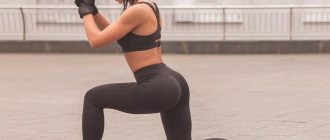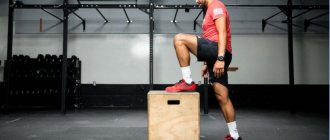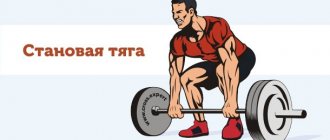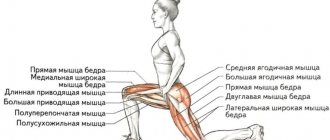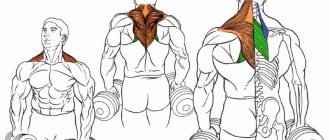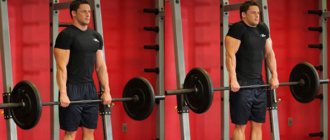The lunge exercise is one of the main movements in any fitness workout. It allows you to shape and strengthen almost every muscle in your lower body.
It is one of the best exercises with body weight and therefore does not require any additional equipment or equipment in its basic version. This is one of its advantages.
Like I said, leg lunges work great for training your lower body. But how are they different from other bodyweight exercises? Such as squats, for example.
The lunge exercise is more difficult than squats because a wide stance puts you in an unstable position. And this, in turn, forces the body to include balancing of the whole body.
Generally speaking, squats and deadlifts are the top exercises for the lower body. But lunges are another less-touted but effective lower-body exercise.
Squats and deadlifts are bilateral exercises, meaning you use both sides of your body at the same time. Lunges are unilateral exercises, meaning one leg works more than the other.
The lunge is a very natural movement, similar to walking or running. Since most of your weight is on one leg, you don't need as much resistance as a squat or deadlift.
Less weight means less risk of injury. Lunges are also safer on the knees than squats, according to a 2010 study published in the journal Strength and Conditioning Research.
This stance also changes the load on different parts of the body. And allows you to work with each leg separately.
Once you have mastered the correct lunge technique, you can easily incorporate this exercise into your strength training or circuit training.
How to create the perfect circuit training in the gym? Read in this article.
What muscles work during lunges?
The lunge exercise works several major muscle groups at the same time. These exercises build lower body strength and help maintain muscle mass and bone density in that part of the body.
Well, what am I saying? You can see which muscles work during lunges in the figure below.
As we can see, the lunges exercise involves the abdominal and lower back muscles, gluteal muscles, calves, hip flexors and quadriceps muscles.
In fact, a small study published in 2006 in ACEFitness found that the forward lunge is one of the most effective exercises for working the hamstrings, gluteus maximus, and gluteus medius.
The study found that the forward lunge activated these specific muscles more than bodyweight squats, leg presses, and hip extension exercises.
Training programs
Both men and girls often include lunges with dumbbells in their complexes.
Most popular programs:
| Women's Leg Day. Emphasis on the back of the thigh and glutes | |
| Exercise | Sets x reps |
| Romanian barbell deadlift | 4x12 |
| Lunges with dumbbells with an emphasis on the hamstrings | 4x10 (for each leg) |
| Smith squats with emphasis on the hamstrings and glutes | 4x12 |
| Seated leg curls | 3x15 |
| Standing single leg curls | 3x15 |
| Glute bridge with barbell | 4x12 |
| Women's Leg Day | |
| Exercise | Sets x reps |
| Barbell Squats at Smith | 4x15 |
| Lunges with dumbbells | 4x10 (each leg) |
| Leg press in the simulator | 3x12 |
| Plie squats with dumbbells | 3x12 |
| Glute bridge with barbell | 4x12 |
| Superset of leg extensions and flexions in exercise machines | 3x12+12 |
| Men's Leg Day | |
| Exercise | Sets x reps |
| Squats | 4х12,10,8,6 |
| Romanian deadlift | 4x10 |
| Leg press in the simulator | 3x12 |
| Walking lunges with dumbbells | 3x10 (each leg) |
| Leg extensions in the simulator | 3x15 |
| Leg curls in a lying machine | 3x15 |
Recipes for healthy eating
Oatmeal with apple
- 2.8 g Protein
- 1.9 g Fat
- 22.0 g Carbohydrates
- 135.2 kcal
30 min.
- #vegetarian dish
- #second course
- #dietary
- #breakfast
- #porridge
- #cinnamon
- #Brown sugar
- #honey
- #milk
- #oatmeal
- #snack
- #granulated sugar
- #apples
Other recipes
The benefits of lunges
What are the benefits of doing the lunge exercise? Let's take a closer look.
1. Stability of the muscle center (abdominal and lower back muscles)
Proper lunge technique will help you achieve a stronger, more stable core. This type of training will help you create the stability that occurs when you move your hips up and down.
A stronger core allows you to cope with lower back pain in particular. It also improves your balance and posture.
2.Improved sense of balance
Lunges train one part of the body independently of the other. This works to develop a proper sense of body balance and coordination. The stabilization benefits achieved from lunges are much better than those from squats and deadlifts.
3.Strengthens the legs and buttocks
Lunges are quite effective in terms of strengthening the legs and buttocks. Lunges target large muscle groups in the lower body; it boosts your metabolism and helps you lose weight much faster. Once this excess fat is removed, lunges work on lower body shape and strength.
About
Features with different projectiles
There are several variations of lunges in which you can use different projectiles. In most cases, they do not change the movement pattern, but there are some differences in which individual muscles can be loaded to a greater or lesser extent.
- With a barbell on your shoulders is a less convenient option due to the length of the barbell. This option involves the iliotibial tract more into the work. It also increases the compression load on the spine.
- With a sandbag - a more convenient option, suitable for using large weights (it is convenient to hold the sandbag on your back using the handles). The downside is that it places more stress on the spine.
- Stepping onto a bench is a variant of forward lunges in which the muscles of the front of the thigh and buttocks work (receive the main load), but without any compression effect on the spine. They are also characterized by increased amplitude due to the height of the bench and greater muscle stretch.
Lunges: execution technique
The exercise seems simple, but you must strictly follow the lunge technique.
- We start from a standing position. Hands along the body. Feet shoulder width apart.
- We take a step forward and stand in a stance with our legs spread. Right foot forward. Left leg behind. The distance between them is approximately 60-100 centimeters, depending on the length of your legs. This stance requires some coordination, so if you feel the position is unstable, do it with a chair or holding onto a wall.
- Before you lunge, make sure your torso is straight and your back foot is on your toes.
- Bend your knees and lower your body down until your back knee is a few inches off the floor.
- At the bottom of the movement, your front thigh should be parallel to the floor and your back knee should be pointing toward the floor. The weight should be evenly distributed between both legs.
- To return to the starting position, push back while keeping your weight in your right heel.
- Do the full number of repetitions you planned before moving to the other leg.
When to expect the effect
A noticeable effect will be achieved if the following recommendations are followed:
- Training should be regular. There should be 2-3 workouts per week.
- The execution technique must be followed. The risk of injury is reduced, and if performed correctly, the right muscles will be activated.
- It is important to maintain a balance between training and rest. It has been scientifically proven that the effectiveness of exercise without quality rest decreases significantly.
- It is important to maintain a sleep-wake schedule.
- It is necessary to maintain a balance of proteins, fats and carbohydrates in the diet. Nutrition should be balanced.
The side lunge is an effective exercise for strengthening the quadriceps and thigh muscles while maintaining proper technique. The effect will be noticeable within 2-3 weeks. The muscles will become more toned and stronger. Endurance will also increase, which will allow you to diversify the exercises and add load.
Errors when performing a lunge
If you don't know how to lunge correctly, you may make mistakes. And in the worst case scenario, it’s not far from injury. And at best, you won't get the effect you expected.
Lunge Too Far Forward
During lunges, as with squats, it is easy to put too much strain on your knees. When moving forward, the knee may move too far over the toes.
Although your knee may move forward a little, you should focus on bringing your body down as you lunge, not forward.
Another key is to keep your front knee in line with your second toe throughout the lunge. This helps to tighten your hips a little as you lunge and check your form in a mirror image.
Back knee rotates outward
Because lunges can throw off your balance, you may involuntarily rotate your back knee to stabilize yourself in an attempt to gain stability. Some people may naturally rotate their posterior knee due to different biomechanics or ingrained habits they have acquired over the years.
Rolling your knee outward or inward during a lunge is a movement that can lead to pain and injury. The back knee should point toward the floor at the bottom of the lunge. If you feel pain in your back knee, check your position in a mirror to make sure you are not internally or externally rotating your knee without realizing it.
Another factor to consider is the flexibility of your quadriceps and hip flexors. If these areas are tight, your form may be compromised and you may even feel a pulling sensation in your kneecap. You can avoid this by either shortening your range of motion and/or stretching your quads before lunges.
Standing too close or too wide
Each person will have a different posture based on their height, leg length, and their comfort position. However, by placing your feet too close together, most of the force is placed in the knees rather than in the glutes, hamstrings, and quads, where it should be. Legs that are too wide apart can compromise the flexibility of the back leg and result in an already unstable position.
You can avoid this by watching your form in a mirror or, if you don't have one, check your stance by getting into a lunge position. Lower yourself all the way down, placing your back knee on the floor (make sure you're on a mat or other soft surface). This allows you to check if you have a 90 degree angle in both knees. If you don't, you may change your position.
Execution safety and precautions
- If you have had or have a knee injury, be sure to consult your doctor before performing the lunge exercise. The same applies to existing knee problems.
- If you experience knee pain during lunges and exercises. Make sure you are using proper lunge technique and modify it to correct this problem.
- If you have any problems with balance, practice your lunge against a wall or bench where you can lean on it.
- Don't attempt more advanced lunge types until you've perfected your form with the static lunge.
- During pregnancy, limit yourself to static lunges only during the third trimester.
What to pay attention to
There are several subtleties that should not be overlooked during training.
Photo: istockphoto.com
- Don't slouch your back.
- Increase the load gradually. Do lunges without equipment, then use dumbbells or a barbell.
- Lift up using your front leg rather than pushing with your back leg.
- The feet are pressed tightly to the floor.
- Full range of motion.
- Correct pace: lower for 2-3 seconds, rise for 1 second.
5 Best Squats for Toned Butts
As the Italian physiologist and physician Angelo Mosso said, exercise can replace many medications, but not a single medicine in the world can replace exercise. Train more often!
